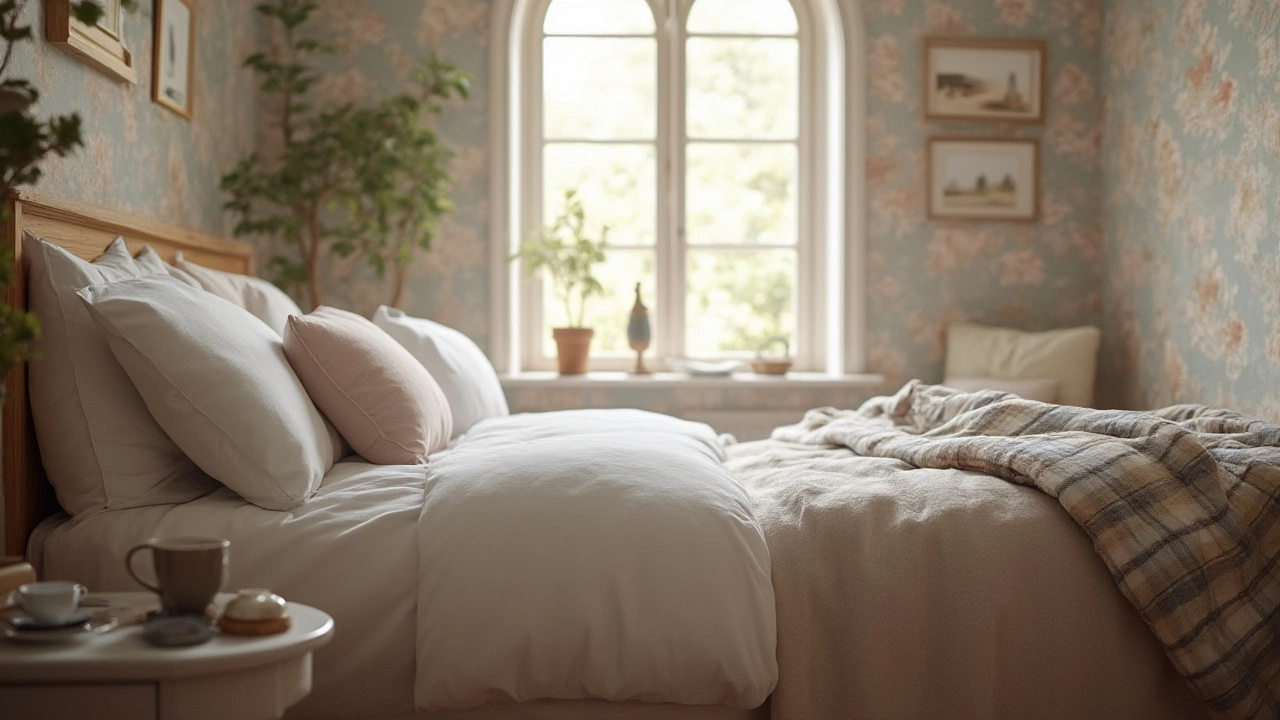Types of Bedding: Eco‑Friendly Choices for a Healthier Home
If you’ve ever stood in the bedroom aisle feeling overwhelmed, you’re not alone. There are dozens of sheet sets, duvet covers, and pillowcases, each promising the perfect night’s sleep. The real trick is cutting through the hype and focusing on the materials that are good for you and the planet. Below we break down the most common types of bedding, what makes them eco‑friendly, and how to choose the right one for your sleep style.
Natural Materials
Organic cotton is the classic favorite. Grown without synthetic pesticides, it feels soft, breath‑able, and gets better with each wash. Look for GOTS‑certified labels; they guarantee the cotton was grown and processed sustainably.
Bamboo has become a pantry‑style bedding staple for a reason. It’s naturally antimicrobial, wicks moisture, and drapes nicely over the mattress. Since bamboo grows fast and requires little water, its environmental footprint is low. Choose bamboo viscose that’s produced in a closed‑loop system to keep the process truly green.
Hemp may sound rough, but modern processing gives it a smooth, linen‑like feel. Hemp is one of the toughest fibers, so it lasts years without pilling. It also improves air flow, which can help regulate temperature on hot nights.
Linen is made from flax plants that need little fertilizer and thrive in poor soils. Linen sheets get softer the more you wash them and stay cool in summer while still offering warmth in winter. It’s a great pick if you love a relaxed, natural look.
Recycled & Innovative Fabrics
Recycled polyester blends post‑consumer plastic bottles with natural fibers. The result is a durable, wrinkle‑resistant sheet that mimics the feel of traditional synthetic fabrics without adding new plastic to landfills. Look for certifications like rPET to be sure the fabric actually contains recycled content.
Tencel™ (Lyocell) is derived from sustainably sourced wood pulp, usually eucalyptus. The production uses a closed‑loop solvent system, meaning almost all chemicals are reclaimed and reused. Tencel feels silky, drapes beautifully, and has excellent breathability.
When you shop, pay attention to the certifications listed on the tag—GOTS, OEKO‑Tex, FSC, or the Global Recycled Standard. These signals tell you the brand has taken extra steps to verify the material’s eco‑credentials.
Beyond material, think about the whole life cycle. Can the bedding be composted or recycled when you’re ready for a refresh? Some brands offer take‑back programs that turn old sheets into new fibers. If a company doesn’t have a clear end‑of‑life plan, it might be worth looking elsewhere.
Now that you know the basics, here’s a quick cheat sheet:
- Best for softness: Organic cotton, Tencel.
- Best for cool nights: Bamboo, linen, hemp.
- Best for durability: Hemp, recycled polyester.
- Best for budget‑friendly eco‑options: Organic cotton blends, recycled polyester.
Choosing the right type of bedding isn’t just about looks; it’s about how the fabric interacts with your body and the environment. Mix and match what feels right for your climate and personal preference, and you’ll notice the difference night after night.
Ready to upgrade? Start by checking the label for those green certifications, feel the fabric in‑store if you can, and remember that a small change in your bedroom can ripple out to a greener planet. Sleep well, sleep sustainably.
-

Bedding Explained: Meaning, Types, and Tips for Choosing the Best Bedding
Discover the real meaning of 'bedding' in English, its types, and expert tips for picking the perfect bedding set. Upgrade your sleep and bedroom style.
